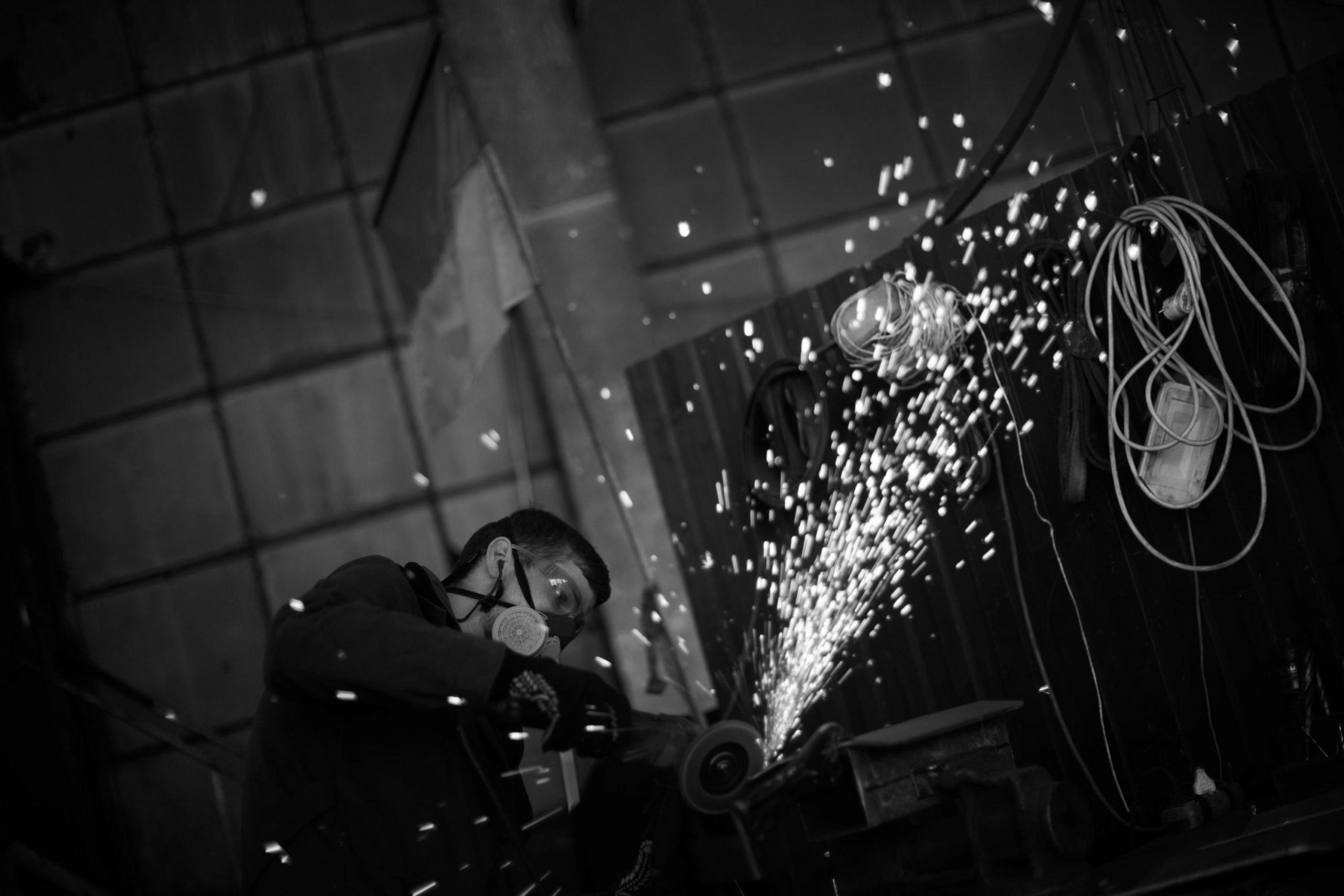Defend the physique: Ukraine volunteers craft armor, camouflage
Warning: Undefined variable $post_id in /home/webpages/lima-city/booktips/wordpress_de-2022-03-17-33f52d/wp-content/themes/fast-press/single.php on line 26

2022-05-09 09:16:18
#Protect #physique #Ukraine #volunteers #craft #armor #camouflage
ZAPORIZHZHIA, Ukraine (AP) — Sparks fly as a circular saw slices into steel, while welders nearby work feverishly to the sound of blaring heavy metal. Upstairs, stitching machines clatter as girls mark patterns on fabric being formed into bulletproof vests.
An old industrial complicated within the southeastern Ukrainian riverside metropolis of Zaporizhzhia has become a hive of exercise for volunteers producing every part from body armor and anti-tank obstacles to camouflage nets, transportable heating stoves and rifle slings for Ukrainian soldiers preventing Russia’s invasion. One part makes a speciality of vehicles, armor-plating some, converting others into ambulances. Another organizes meals and medical deliveries.
With the entrance line about 50 kilometers (30 miles) from the city, some sections of the operation, such as the stitching of bulletproof vests, are working across the clock in shifts to meet demand. Crowdfunding has introduced in enough money to purchase steel from Sweden, Finland and Belgium, which is lighter than native metal, organizers say, a vital quality for physique armor.
The operation is the brainchild of local celeb Vasyl Busharov and his good friend Hennadii Vovchenko, who ran a furniture-making business. They named it Palianytsia, a sort of Ukrainian bread whose identify many Ukrainians say cannot be pronounced correctly by Russians.
The operation depends totally on volunteers, who now number more than 400 and come from all walks of life, from tailors to craftsmen to lawyers. Aside from those concerned in production, there are also drivers delivering humanitarian assist and medical gear bought by donated funds.
“I feel I am needed right here,” mentioned fashion designer Olena Grekova, 52, taking a short break from marking fabric for vests.
When Russia invaded on Feb. 24, she was in Thailand searching for inspiration for her spring collection. Initially, she said, she wondered whether or not it was a sign from God that she shouldn’t return. Her husband and two grownup sons urged her to not.
“But I decided that I had to return,” she said.
She had recognized Busharov for years. Arriving house on March 3, she gathered her tools the subsequent day and by March 5 was at Palianytsia. She’s been working there every single day since, bar one, generally even at night time.
Shifting from designing backless ballgowns to creating functional bulletproof vests was “a new experience for me,” Grekova said. However she sought feedback from soldiers for her designs, which have armor plates added. Now she is helping to produce a number of versions, together with a prototype summer time vest.
In another section of the industrial complicated, 55-year-old Ihor Prytula was busy making a new camouflage web, winding pieces of dyed cloth via a string frame. A furniture-maker by commerce, he joined Palianytsia in the beginning of the struggle. He had some navy experience, he stated, so it was easy to get suggestions from troopers on what they needed.
“We converse the same language,” he said.
For Prytula, the struggle is private. His 27-year-old son was killed in late March as he helped evacuate individuals from the northern city of Chernihiv.
“The conflict and loss of life, it’s bad, belief me, I know this,” he mentioned. “It’s unhealthy, it’s tears, it’s sorrow.”
The call for volunteers went out as quickly because the warfare started. Busharov announced his undertaking on Facebook on Feb. 25. The following day, 50 people turned up. “Next day 150 folks, next day 300 people. ... And all together, we attempt (to) shield our metropolis.”
They began out making Molovov cocktails in case Russian soldiers advanced on Zaporizhzhia. In 10 days, they produced 14,000, he mentioned. Then they turned to producing anti-tank obstacles generally known as hedgehogs — three giant metal beams soldered collectively at angles — used as part of the city’s defenses. Quickly, Busharov and Vovchenko stated, they found another urgent need: there weren’t sufficient bulletproof vests for Ukraine’s soldiers.
However studying how one can make one thing so specialized wasn’t straightforward.
“I wasn’t really related with the army in any respect,” stated Vovchenko. “It took two days and three sleepless nights to grasp what must be accomplished.”
The staff went through various sorts of metal, making plates and testing them to examine bullet penetration. Some didn’t provide enough protection, others had been too heavy to be useful. Then that they had a breakthrough.
“It turns out that steel used for automobile suspension has superb properties for bullet penetration,” Vovchenko said, standing in entrance of four cabinets of take a look at plates with various levels of bullet harm. The one made from car suspension metal confirmed dozens of bullet marks but none that penetrated.
The vests and all the things else made at Palianytsia are supplied free to troopers who request them, as long as they'll show they are in the army. Each plate is numbered and each vest has a label noting it isn't for sale.
Thus far, Palianytsia has produced 1,800 bulletproof vests in two months, Busharov stated, including there was a waiting record of around 2,000 more from throughout Ukraine.
Vovchenko said they've heard about up to 300 people whose lives have been saved by the vests.
Understanding that is “incredibly inspiring and it retains us going,” he said.
____
Inna Varenytsia in Zaporizhzhia, Ukraine, contributed.
___
Comply with all AP stories on the battle in Ukraine at https://apnews.com/hub/russia-ukraine
Quelle: apnews.com